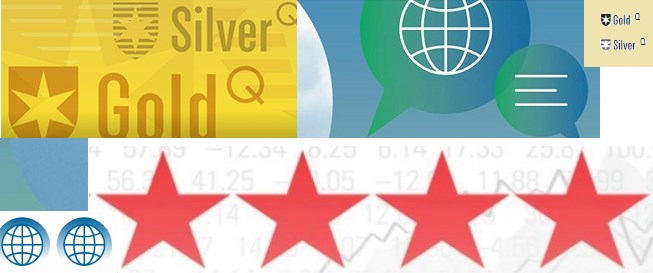
Would you rather buy a company whose shares are worth $1 or $1,000? The answer might seem obvious: buy the cheapest shares and get 1,000 of them for the price of one of the expensive stock.
Like many things in the investment world, though, this issue is more complicated than it seems. Let’s look at the debate in detail.
As consumers we are led by instinct, budget and, increasingly, algorithms, to look for the “best price” for a product or service. Technology has made it much easier to compare prices and shops. Sometimes price is an indicator of quality: a luxury watch will cost more than a cheaply-made one that falls apart in a month.
But this “savvy shopper” mindset doesn’t work so well for investing: a company with a share price of $10,000 may be a worse prospect than one priced at $10. Until you look in detail at the stock, you don’t really know.
A Smaller Slice
That doesn’t stop investors bargain hunting. So-called “penny stocks” have attracted many acolytes over the years. The idea is that “cheaper” shares have more potential to rise more quickly because they’re often attached to younger, more agile companies. There are obvious examples: Apple was a penny stock during the 1980s and 1990s and is up 232,000% percent since it floated (taking splits into account).
There’s no academic evidence that cheaper stocks perform better than expensive ones, but that doesn’t stop investors (and speculators) believing they can find the next Apple. Buying cheaper shares may be easier to justify ("they're only $1") than expensive ones ("should I buy this stock at $1,000 each?) but what may matter more is your overall outlay - and your investment return, which is unknowable at this stage.
Looking briefly at the below table from Morningstar’s analysts, it’s clear a higher price doesn’t make a stock more or less attractive, and vice versa. Berkshire Hathaway is fairly valued, for instance, but Apple is overvalued under our methodology. This snapshot suggests that there’s no obvious correlationbetween higher prices and valuation.
Perhaps the most prominent example of an oversised share price is Warren Buffett’s investment vehicle Berkshire Hathaway (BRK.A), whose A shares have just broken through the $500,000 per share mark. This is double their price in March 2020. Given Buffett’s reputation, perhaps investors with substantial means are willing to part with half a million dollars for one share. B shares were created in the 1990s to answer the demands from retail investors with more modest means, but they carry a fraction of the voting rights of the A shares.
The success of US tech companies in the last 10 years has meant they have grown quickly, and their share prices have followed suit. This caused a problem for retail investors looking to get in on the action. To buy one Amazon share, you’d have to pay nearly $3,000, roughly the average monthly salary for an American.
As a result, Amazon is planning to split its shares, joining the likes of Apple, Tesla and Alphabet. My colleague Ruth Saldanha describes this as like having a bar of chocolate and splitting it into smaller pieces.
“You still have the same amount of chocolate, just in smaller segments,” she says.
Announcing Amazon’s share split, the company explained that this “makes the share price more accessible for people looking to invest in the company”.
One downside of splitting is the process may not make the shares digestible after all. Tesla split in 2020, but the shares are now $1,000 each, and the company is thus looking to split again.
Fractional share ownership was invented as a way of getting around this problem. Instead of owning one Apple share at $160, you’ll own say $10 of Apple shares. This innovation has been driven by demand from investors wanting a piece of the action, especially among younger customers, some of whom have been drawn in by the “meme stock” extravaganza of the last few years.
Hitting The Skids
As with every financial innovation, though, it pays to step back and ask what it means for you. Firstly, with fractional investing you sacrifice voting rights. Owning one share doesn’t buy you much influence, but it has traditionally gained you access to the annual general meeting (AGM), in which you can voice your concerns to the company’s management.
In the era of ESG investing, it is a privilege to be on the same platform as the likes of BlackRock and Vanguard, even though you don’t have as much power as them. There are other concerns too. Your “fractional” share trade may come way down the pecking order, as Ian Tam, Morningstar Canada’s director of investment research, says. Many brokers aggregate shares from multiple buy orders and place them at the end of trading. This may mean you don’t necessarily get the price you want.
The bigger picture is that investors now have a much wider menu of choices than in previous eras, and that has been enabled by technology. Buying overseas shares may seem enticing, especially when prices of hot stocks are rising, but that may not work for your long-term investing goals anyway. As Tam points out, if your $10,000 portfolio has just one share worth $2,000, it will not be possible to diversify and create a sensible asset allocation.
Why not invest in funds instead? If you like a particular company, you could buy a fund that owns it. Funds exposed to Tesla in 2020 had a glorious year, for example. You get the uplift if the fund’s components do well. But if the fund is well diversified, you are cushioned from some of the losses if your former hot stock hits the skids.
James Gard is senior editor at Morningstar.co.uk



























